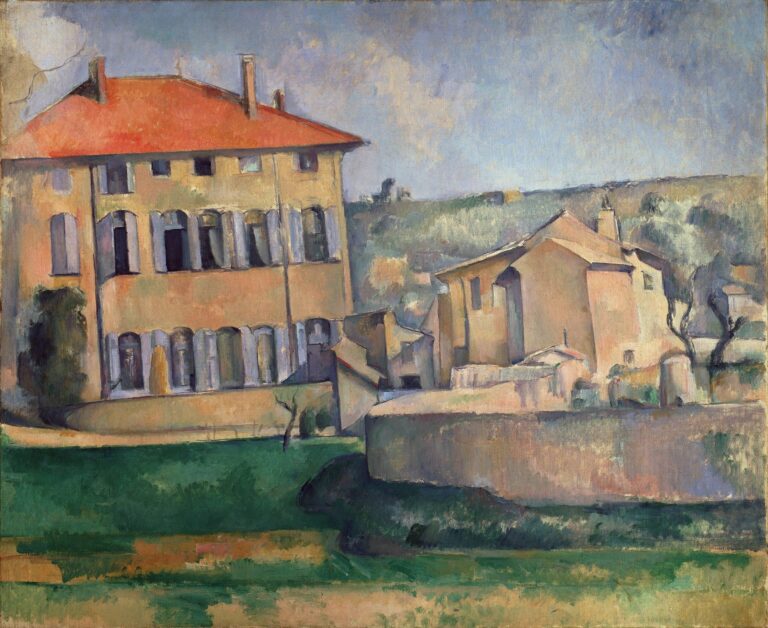Why This French City Just Trademarked ‘Cézanne’
In a significant cultural and legal move, the picturesque city of Aix-en-Provence has officially trademarked the name “C√©zanne,” paying homage to its most illustrious past resident, the renowned Post-Impressionist painter Paul C√©zanne. This unprecedented step aims to protect the legacy of the artist whose works have become synonymous with the region’s identity and artistic heritage. The trademark is not only a strategic initiative to safeguard the city‚Äôs cultural assets but also a response to the growing commercialization of art and its associated imagery. As cities around the world grapple with how best to celebrate and protect their artistic legacies, Aix-en-Provence’s action raises important questions about the intersection of art, commerce, and heritage. In this article, we explore the motivations behind the trademark, the implications for the city and the arts community, and what it means for the future of C√©zanne’s enduring influence.
Cézanne’s Legacy: The Cultural Significance of the Trademark
The decision to trademark the name ‘C√©zanne’ by the city of Aix-en-Provence signifies not just a legal maneuver but also a profound recognition of the artist’s enduring influence on the cultural landscape. C√©zanne, often hailed as the father of modern art, played a pivotal role in transitioning from Impressionism to a new aesthetic that laid the groundwork for movements such as Cubism. By asserting ownership of his name, Aix-en-Provence aims to capitalize on the artist’s legacy while safeguarding its cultural heritage against potential misuse. This strategy underscores how closely intertwined arts and commerce have become, especially in a globalized world driven by tourism and cultural branding.
Moreover, the trademark embodies a broader trend where cities seek to enhance their identity through historical figures. Cézanne is a symbol of creativity, inspiring numerous initiatives, exhibitions, and festivals that not only celebrate his work but also draw visitors to the region. Relevant activities might include:
- Annual art fairs dedicated to post-impressionist artists
- Workshops inspired by C√©zanne’s painting techniques
- Guided tours of his hometown and favorite painting spots
Table. Key figures in modern art influenced by Cézanne:
| Artist | Movement | Influenced By |
|---|---|---|
| Pablo Picasso | Cubism | C√©zanne’s use of geometric forms |
| Henri Matisse | Fauvism | C√©zanne’s color palettes |
| Georges Braque | Modernism | C√©zanne’s innovative perspectives |
Economic Impacts: How Trademarking Cézanne Benefits Local Art and Tourism
The decision to trademark ‘C√©zanne’ not only safeguards the legacy of the renowned artist but also catalyzes regional economic growth. By creating a recognizable brand, the city cultivates a unique identity that has the potential to attract art enthusiasts and tourists alike. Local businesses stand to benefit significantly as visitors flock to experience the vibrant culture associated with C√©zanne. A few notable economic advantages include:
- Increased Tourism: Enhanced interest in C√©zanne’s work is likely to draw visitors to exhibitions, museums, and local art events.
- Business Opportunities: Local artisans and craftspeople will have greater opportunities to create merchandise that resonates with tourists.
- Job Creation: The influx of tourism can lead to job creation in hospitality, retail, and the arts.
Moreover, the trademark initiative extends beyond mere economic benefits; it fosters a sense of community pride and cultural preservation. By investing in C√©zanne’s brand, the local government emphasizes the significance of art as a catalyst for growth. This trademarking effort can lead to an uptick in collaborative partnerships among local institutions, with potential initiatives such as art festivals, education programs, and marketing campaigns designed to elevate the city’s profile. The collective focus on promoting C√©zanne’s artistic heritage can yield dividends across various sectors, as illustrated in the table below:
| Sector | Potential Benefit |
|---|---|
| Hospitality | Increased bookings during art events |
| Retail | Higher sales from art-inspired merchandise |
| Education | Enhanced art programs in schools |
Legal Landscape: Navigating Intellectual Property in the Arts
The recent decision by a French city to trademark the name “Cézanne” highlights a pivotal shift in how artistic legacies are protected and commercialized. This move is not merely a matter of local pride but reflects a broader trend where cities and institutions increasingly recognize the economic value of their cultural heritage. By securing the trademark, the city aims to safeguard against potential misuse while promoting tourism and educational initiatives centered around the renowned artist. The registration raises questions about the intersection of artistic legacy and commercial interests, serving as a reminder that intellectual property laws are evolving to adapt to the unique challenges faced by the arts sector.
In an environment where global marketplaces are intertwined with local cultural narratives, the implications of such trademarks are profound. They create a framework for cooperation among artists, governments, and commercial entities, ensuring fair compensation for the original creators’ works. The trademarking process emphasizes the need for a balanced approach that protects the authenticity of artistic expression while fostering innovation. Key aspects of this conversation include:
- Intellectual Property Rights: Addressing ownership and usage of artistic works.
- Cultural Tourism: Enhancing local economies through art-related activities.
- Legal Precedents: Setting examples for future trademark applications in the arts.
| Aspect | Implication |
|---|---|
| Trademark Registration | Protects local cultural identities |
| Economic Impact | Potential boost in tourism revenue |
| Public Engagement | Inspires community involvement in the arts |
Future Implications: What This Trademark Means for Other Artistic Communities
The decision to trademark ‘C√©zanne’ could have significant repercussions across artistic communities globally. By establishing a legal framework around a prominent name, this move not only protects the heritage of the artist but also sets a precedent for other cities or regions that claim cultural icons. Communities looking to preserve their artistic legacies may now consider similar strategies, inspiring a trend in which local art forms receive formal recognition and protection. Such actions may encompass:
- Strengthened local economies through cultural tourism.
- Enhanced collaboration between artists and local governments.
- Increased awareness about the significance of regional art movements.
Moreover, the implications extend beyond legal protections; they may foster a deeper sense of identity within these communities. Artistic spaces could become sanctuaries for revival, leading to a resurgence of interest in regional art forms. This approach might also encourage more proactive measures to safeguard not just names, but the rich histories and narratives associated with them. Below is a summary of potential actions that can be inspired by this trademark initiative:
| Action | Potential Effect |
|---|---|
| Trademarking local art terms | Legal protection for heritage |
| Establishing art councils | Promotion of local artists |
| Launching cultural festivals | Attraction of tourism and attention |
Closing Remarks
In conclusion, the city of Aix-en-Provence’s decision to trademark the name ‚ÄúC√©zanne‚Äù marks a significant step in the ongoing efforts to protect and promote its cultural heritage. By safeguarding the legacy of one of the most influential artists in the Post-Impressionist movement, Aix-en-Provence aims to bolster both its local economy and global cultural standing. As debates surrounding intellectual property and artistic legacies continue, this move could set a precedent for other cities vying to honor their artistic icons. As the world watches, it remains to be seen how this trademark will be utilized and what implications it will have for the art community at large.




